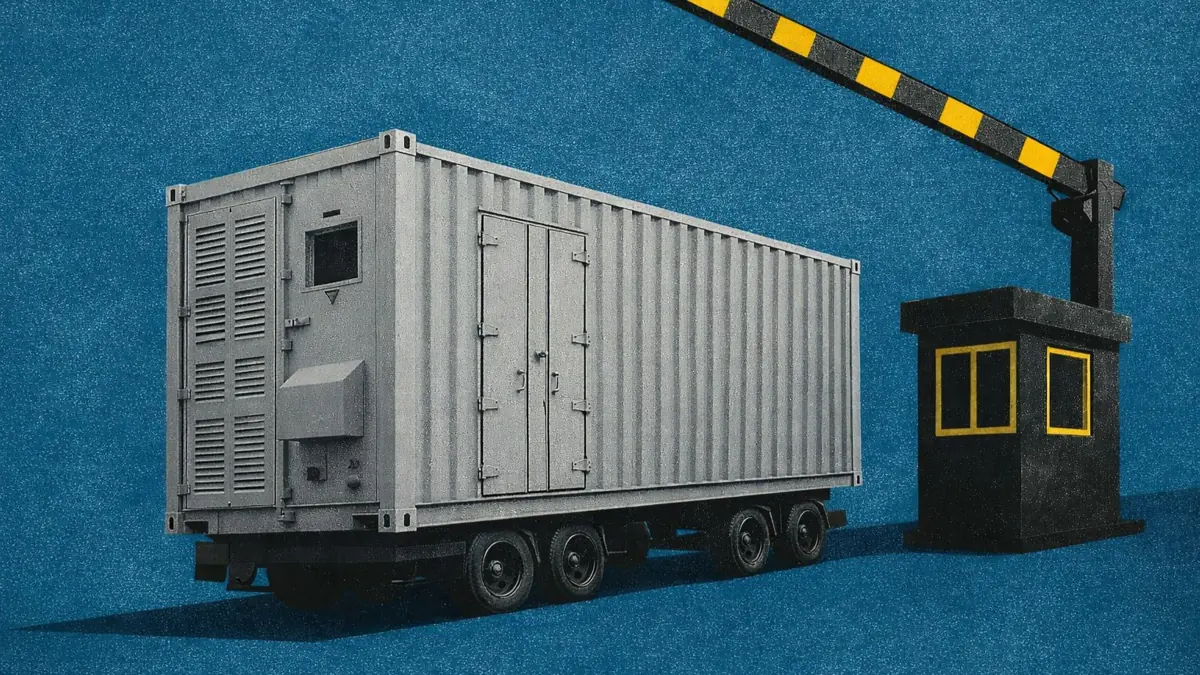GB Battery Pipeline Report: Operational capacity to hit 15 GW in 2027
GB Battery Pipeline Report: Operational capacity to hit 15 GW in 2027
There are 14 GW of battery energy storage projects in the latest update to our GB battery pipeline planned to begin commercial operation in Great Britain by the end of 2027. This would take total operating capacity to 18 GW from 4 GW today.
However, our latest projections suggest just 11.5 GW of this will actually begin commercial operation by this point. This would be enough for total operational battery capacity to be 15 GW by the end of 2027.
The pipeline contains battery projects in Great Britain holding long-term contracts such as Capacity Market agreements and Pathfinder contracts. It extends to 2027. Each project has a specific estimated buildout date based on press releases, company websites, contract start dates, or direct confirmation from the companies responsible for the project. This is also supported by data in the Renewable Energy Planning Database (REPD) and Transmission Entry Capacity (TEC) register.
The projection is Modo Energy’s expectation of how much capacity will actually come online. This is based on historic buildout trends and consideration of how this could change in the future.
Taking into account delays in pipeline capacity coming online, we project total operation capacity at the end of 2024 to be 5.1 GW. This is 24% below the 6.7 GW from the pipeline. By the end of 2027, this figure reaches 15.4 GW, 14% below the pipeline of 17.9 GW.

Delays put short-term projections behind the FES
ESO’s 2023 Future Energy Scenarios (FES) “represent a range of different, credible ways to decarbonize our energy system as we strive towards the 2050 target”. These scenarios include specific values for battery energy storage in Great Britain each year until 2050.
While the projected buildout would lead total capacity in Great Britain to exceed these scenarios, it would take up to three years for the buildout that is projected to catch up to the FES.

The current capacity and continued projection are set to exceed only the Falling Short scenario. Falling behind the remaining scenarios and the five-year forecast could pose an issue to system needs between now and 2027. FES 2024 is due to be published on June 24th, 2024.
Capacity projected to be online by the end of 2024 has reduced by 1.5 GW since Q3 2023
At the end of Q3 2023, following the high buildout rates from the previous quarters, total capacity was projected to be 6.6 GW by the end of 2024. 2023 was a record-breaking year for new battery capacity becoming commercially operational. 415 MW came online each quarter on average. However, Q1 2024 saw just 184 MW of newly operational capacity.

Following the lower buildout in Q1 2024 and an update to the methodology, the projection for operational capacity by the end of 2024 is now 1.5 GW lower than what it was at the end of Q3 2023.
Total battery capacity could range between 13 GW and 17 GW by the end of 2027
Delays have been affecting the construction and commissioning of new battery projects in Great Britain. These delays range from issues with commissioning to the closing of Engineering, Procurement, and Construction (EPC) companies.
Uncertainty over how these delays will continue to impact projects, alongside whether pipeline projects will actually move forward, sees up to a 4 GW difference in operational battery capacity by the end of 2027.

Assuming buildout continues at the lower rate, capacity could be just 4.8 GW by the end of 2024. However, if delays are overcome and the buildout catches up to the battery pipeline, there could be 5.8 GW operational at the end of the year.
87% of new-build capacity in the battery pipeline will come from 2-hour sites
Batteries with a duration of at least two hours are set to become the most common type of battery. Altogether, these units make up over 12 GW of the capacity in the pipeline. This is 87% of the pipeline’s total capacity.
Between 3 GW - 4.2 GW of batteries with a duration of at least two hours are planned to be added to the grid each year from 2025-2027.

2026 has the highest amount of new-build two-hour units in the pipeline at 4.2 GW, accounting for 88% of the total pipeline for that year.
The rise of two-hour units means total battery energy capacity will grow to five times the current level
The shift towards two-hour units means that the average duration of the battery fleet could reach 1.8 hours in 2027, compared to 1.3 hours today. At the end of 2027, total energy capacity is projected to be 27 GWh, five times the figure today.

In addition to the new batteries in the pipeline, some owners are opting to increase the energy capacity of their existing sites. Gresham House plans to increase the energy capacity of its existing and planned sites by 330 MWh in 2024. The addition of 14 MWh at its Arbroath site was completed in April.
‘Megabatteries’ 200 MW or greater make up 68% of pipeline capacity in 2026
Currently, there are no battery sites greater than 100 MW commercially operational in Great Britain. However, there are 19 sites in the pipeline with a capacity of at least 200 MW. The largest of these is the 1 GW Trafford Power site, owned by Carlton Power.
In 2025 57% of the capacity in the pipeline is from batteries with a rated power of at least 200 MW. In 2026 it's 68%.

These batteries mark a change in the size of batteries in Great Britain. There are currently just five batteries with a rated power of 98 - 100 MW, accounting for 13% of the total capacity. However, based on the pipeline, almost half of total capacity would come from sites 100 MW or greater in 2027.

Four companies are set to have 1 GW portfolios by 2027
The pipeline is made up of over 70 companies and partnerships. There are also an additional thirty companies or partnerships with existing batteries. When combining existing capacity and that in the pipeline, the fifty companies with the most capacity will represent 92% of all battery capacity in Great Britain by 2027.

The four largest companies - Zenobe, Gresham House, Amp Energy, and Carlton Power - could each have portfolios of at least 1 GW by the end of 2027.
Some companies may appear on the list multiple times due to partnerships.
The South of Scotland will have the highest total capacity of all Grid Supply Point regions (GSPs)
Based on the pipeline, the South of Scotland GSP region could see battery capacity increase from 350 MW currently to 3.8 GW by the end of 2027. This would make it the largest GSP zone by total rated power. On the other hand, the South of Wales GSP would only see a 260 MW increase. This would take it from 67 MW to 336 MW.

Although South of Scotland could have the highest capacity by the end of 2027, this would differ each year before then. Based on the pipeline, Yorkshire would have the highest capacity at the end of 2024. North Western by the end of 2025 and then the South of Scotland by the end of 2026.

Download the data
Click the link below to download the pipeline database
Download







